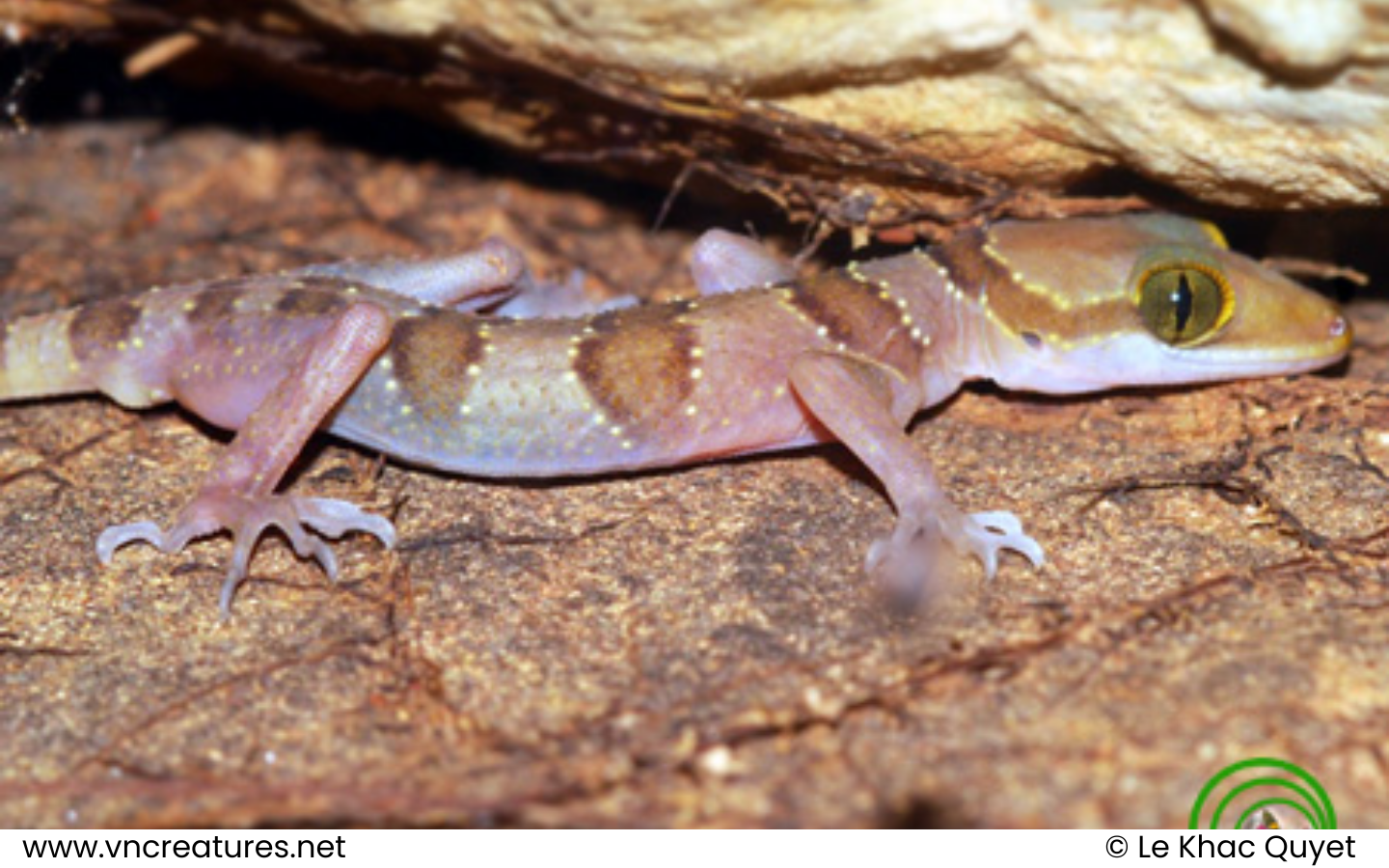
Science name: Cyrtodactylus phuquocensis – Ngo Van Tri, Grismer & Grismer, 2010
Taxonomic: Animalia>> Chordata>> Reptilia>> Squamata >> Gekkonidae >> phuquocensis
Species status: Endemic ; IUCN status: EN (Endangered Species)
Description:
Physical characteristics: Cyrtodactylus phuquocensis is a moderately-sized gecko with a snout-vent length (SVL) of 80.0–85.8 mm. The body is slender, with long, slender limbs and digits. The tail is long and marked with 9 or 10 dusky white rings. It has one pair of enlarged postmental scales in broad contact and 16–18 rows of weakly keeled dorsal tubercles. There are 42–46 ventral scales between the ventrolateral folds, and males have 7–9 precloacal pores in contact with 10 or 11 enlarged femoral scales.
Coloration and Appearance: The body is yellowish-brown with five narrow dark bands running across the back, bordered by white tubercles. A single broad band is present at the base of the tail. The tail is marked with alternating dusky white and dark rings. The head has a prominent dark brown stripe extending from the eye to the neck, and the belly is creamy white with no significant markings.
Distribution and habitat:
Elevation: Found at elevations around 100 meters above sea level.
Area: Cyrtodactylus phuquocensis is endemic to Phu Quoc Island in southwestern Vietnam, specifically recorded in Phu Quoc National Park, Kiên Giang Province.
Habitat: This species inhabits lowland evergreen forest on a granitic substrate. It is found in primary forest and likely occurs in secondary forest as well.
Behaviour and ecology:
Lifestyle: Cyrtodactylus phuquocensis is a nocturnal gecko, typically active at night on rocks and tree trunks in forested habitats. During the day, it hides in rock crevices and leaf litter.
Reproduction: This species is oviparous, with females laying two eggs during the early rainy season. The eggs are deposited in crevices or under rocks.
Diet: It feeds on small insects found in its forested habitat.
Conservation and status:
IUCN Red List Category and Criteria: Listed as Endangered under criteria B1ab(iii) due to its restricted range and habitat degradation.
Threats: Habitat destruction due to tourism development, deforestation, and agricultural expansion are significant threats to this species, particularly in limestone forest areas on Phu Quoc Island.
How to Identify the Greater Sand Plover, Tibetan Sand Plover and Siberian Sand Plover
Identification Differences within the Sand Plover Complex: The sand plover group, which was traditionally divided [...]
Highlights of Cat Tien National Park Reptiles and Amphibian Endemics
Spanning over 71,350 hectares of tropical forests, grasslands, and wetlands, Cat Tien National Park is [...]
Highlights of Cat Tien National Park Mammals in a World Biosphere Reserve
In addition to reptiles and birds, Cat Tien National Park is also rich in mammals, [...]
Kontum Plateau Endemic and Highlight bird
Kontum Plateau Endemic And Highlight Bird species like Chestnut-eared Laughingthrush and top birding routes while [...]
Dalat Plateau Endemic and highlight bird
The Dalat Plateau is a birdwatcher’s paradise, renowned for its exceptional biodiversity and unique highland [...]
Cat Tien National Park Endemic and Highlighted Birds
Covering 71,920 hectares in southern Vietnam, Cat Tien National Park is home to a number [...]